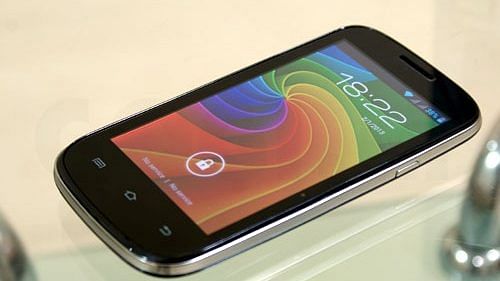When Indians started throwing televisions off their balconies after RWAs declared ‘war’ on China, no one could have been happier than the folks at Micromax. The boycott on Chinese goods, the subsequent ban on Chinese apps, and Prime Minister Narendra Modi’s passionate calls to create an ‘Aatmanirbhar Bharat’ have all been a blessing for the Indian smartphone manufacturer.
Metaphorically speaking, Indians did throw Micromax out of the window when cheaper Chinese brands made their way into the Indian market. So, this turn of events must feel like poetic justice.
The company, which was India’s biggest smartphone seller in 2015, is riding on the current anti-China wave and gearing up for a comeback. The now-popular ‘vocal for local’ trend, however, was not shared by our nationalists before PM Modi threw a catchy line at them.
Hi, Hitesh. Glad to see your support for #VocalForLocal
We are working hard internally and soon we will come up with something big. Stay tuned! #Micromax #MadeByIndian #MadeForIndian— Micromax India (@Micromax__India) June 17, 2020
No hyper-nationalists stood by Micromax when they were slowly strangled out of the market by Chinese giants like Oppo, Xiaomi, Vivo, and OnePlus. Micromax commanded 22 per cent market share, and was the leading smartphone maker in 2015. But by 2018, Chinese brands had captured over 67 per cent of the Indian market. Such nationalism, much wow.
Also read: Motorola’s 5G Foldable Razr adds better cameras and processor, costs less
Rise and fall
Remember the time when every new smartphone ushered in innovations that became talking points for months on end? But most decent smartphones remained out of an average Indian’s pocket. It was Micromax that swooped in and democratised the Indian smartphone market, spearheading the budget phone category.
Micromax stood true to its tagline ‘Nothing Like Anything’, and quenched India’s thirst for cheaper smartphones. In the meantime, cash-loaded companies such as Samsung and Sony grew nervous about how the market was slowly slipping out of their hands. Micromax offered the same features that market leader Samsung was offering at about half the price, and disrupted the market with their flagship Canvas series. And Indians loved it.
It was a lone wolf competing with dozens of big, foreign brands. At the peak of its success, the company even roped in Hugh Jackman as its brand ambassador to announce its arrival on the global scene.
But its downfall was just as quick and meteoric as its success.
Also read: Whatever happened to the aspirational Indian?
No brand loyalty
It’s a shame that the world’s second-largest smartphone market, India, has no homegrown brand leading the industry. The same India that produces top engineers by a truckload every year.
Indian brands like Intex, Lava and Spice came and went out of the market, and no one blinked. Micromax was different, it actually did manage to cause a dent in the technological landscape that has been for long been dominated by mostly foreign players. Yet, no one came to its rescue when it was in trouble.
Neither the consumers, nor the government, and certainly not our vocal nationalists, tried to save the brand as it faded into obscurity.
Around the time of demonetisation, Micromax had a huge inventory of 4G incompatible smartphones lying in China. Yes, even an Indian brand had to manufacture in the land of our ‘enemy number one’, as manufacturing in India did not make any economic sense to them.
Thanks to Jio, India moved from 3G to 4G almost overnight, and Micromax’s inventory was rendered useless. As Micromax retreated to replenish it, Chinese brands swooped in and took over the market. This, coupled with demonetisation, left the company cash strapped and they ended up losing their authority over the market in a flicker.
Now, Micromax is looking for a second life with plans to reclaim the market captured by Chinese players, as both the Indian government and consumers now harbour a strong anti-China sentiment. The drop in market share of Chinese smartphones in India is further proof of this shift.
But Micromax should be cautious, because Indian nationalism is fickle as it is convenient. The company shouldn’t be fooled by trolls masquerading as patriots on Twitter. Everyone is a closeted capitalist who will reach out for the cheapest thing with the best features, never mind which country it was made in. Once the current anti-China sentiment stops making political sense, the urge to boycott Chinese phones will wane as well. But until that happens, Micromax has a good window to reclaim its lost power.
Micromax’s return seems exciting. If they manage to repeat the kind of disruption they had caused a decade ago, Micromax could actually hit the Chinese where it hurt. Because banning apps doesn’t really seem to be working.
Views are personal.
Also read: After blows in India, US, UK, TikTok owner to spend billions to expand from Singapore
